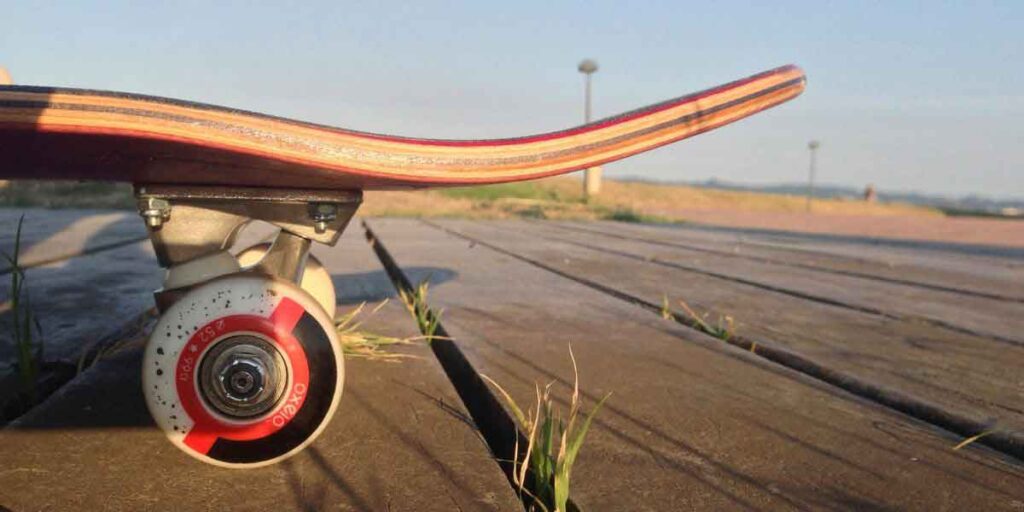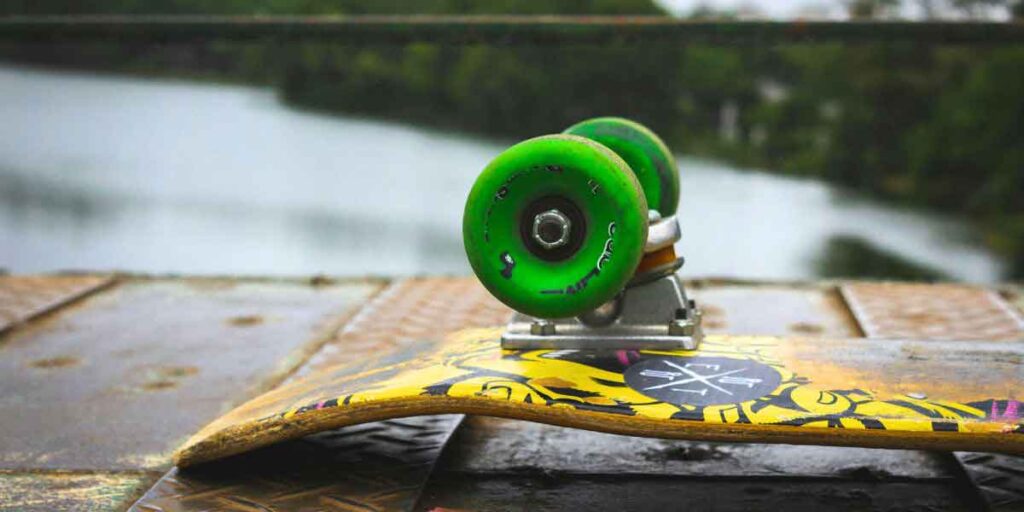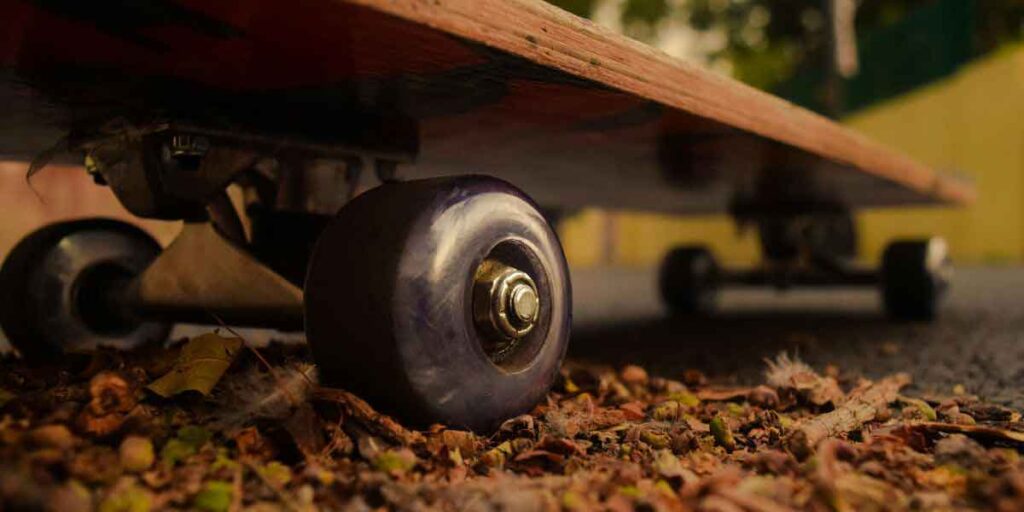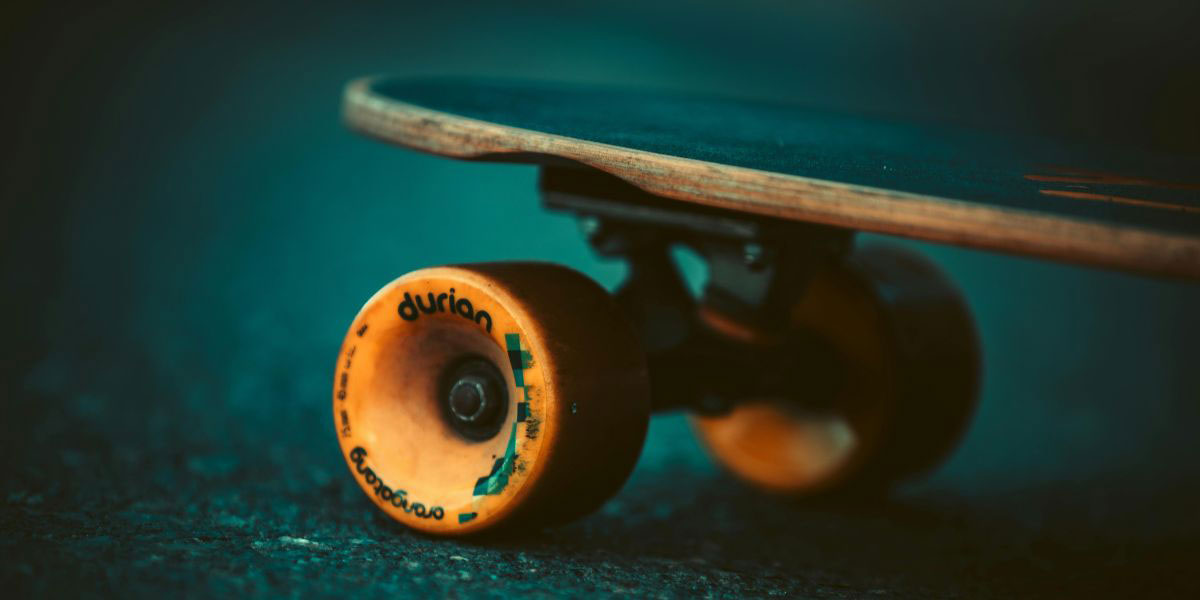Skateboarding is not just a sport; it’s an art that involves balance, skill, and speed for riders. Skateboard wheels are the unsung heroes behind every smooth ride and daring ollie. But have you ever stopped to think, What are skateboard wheels made of? “Get ready, riders! We’re talking about the world of skateboard wheel material!” We’ll also discuss how they impact performance.
The Evolution of Skateboard Wheels: What Are Skateboard Wheels Made Out of?
Skateboard wheels have changed a lot over time. At first, they were made from basic clay, but now they use fancy materials like high-tech polymers. Fancy materials like high-tech polymers give the right mix of grip, speed, and flexibility for all kinds of riding styles.

Clay Skateboard Wheels (1950s)
The earliest skateboards inherited their wheels from roller skates, which were made of clay in the 1950s. These clay wheels were tough to handle because of their hardness and heavy weight. This provided a basic form of traction, durability, and a smooth ride. Durability was a major concern with clay wheels. However, these are not ideal for the emerging skateboarding culture.
Metal Wheels (1960s)
In the 1960s, metal wheels were introduced to fix the problems with clay wheels. They were stronger but not good for skateboarding because they couldn’t grip well.
Clay Composite Wheels (Late 1960s)
Skateboarders tried mixing clay with other materials to make better wheels. These clay composite wheels were better than pure clay, but they still didn’t last long and didn’t grip well enough.
Polyurethane Skateboard Wheels (1970s)
The turning point in skateboard wheel evolution came with the introduction of polyurethane wheels in the 1970s. Polyurethane (urethane) wheels changed skateboarding in a big way. They have an awesome grip, absorb shocks well, and last a long time. This made riding way better, letting skaters do cooler tricks. This innovation is often credited to Frank Nasworthy, who started selling urethane wheels in 1973.
Certainly! Most standard skateboard wheels are labeled ‘HR,’ which stands for High Rebound. On the other hand, some professional wheels are marked ‘SHR,’ indicating Super High Rebound. The term “rebound” refers to the ability of the polyurethane material to bounce back. Higher rebound wheels, whether HR or SHR, are more manageable during maneuvers like power slides, pivots, and reverts. Additionally, a higher rebound helps reduce the occurrence of flat spots on the wheels.
Cored Wheels (1980s)
As skateboarding got better, so did wheel technology. Cored wheels were introduced to be lighter in weight and maintain stable performance. They have a hollow core, which gives the skateboard more agility and responsiveness.
Polyurethane Formulas And Durometer (2000s-Present)
Currently, skateboard wheel technology has continued to advance based on polyurethane formulas and durometer ratings. Wheel makers use fancy chemistry to make special wheels for different kinds of skating. This helps the wheels work better when you’re skating on the street, in a park, or going downhill. Durometer ratings indicate the hardness or stiffness of the wheels, allowing riders to select the perfect ones for their preferences.
High-Tech Polymers And Core Innovations (Present)
At present, modern skateboard wheels are made from a variety of high-tech polymers, such as urethane, polyamide, and even thermoplastic vulcanizate (TPV). These materials provide extreme performance characteristics in terms of grip, durability, and resilience.
Core innovations continue to play an important role. The core design influences the skateboard wheels weight, speed, and slide capabilities.
We skate today largely because of the wheels, which started as clay and have made a remarkable journey from clay to advanced technology.
The Impact of Durometer Ratings On Skateboard Performance

The durometer is a measure of the hardness of the wheel’s urethane material; we typically use the A or B scales. Understanding the impact of durometer ratings on skateboard performance involves considering factors like grip, speed, and ride comfort.
- Durometer Scale: Durometer ratings generally range from 78A to 101A. The lower numbers indicate softer wheels and higher numbers indicate harder ones. There are some special cases with different scales. But for regular skateboarding, this range is what matters most.
- Grip: Softer wheels (75A–87A) grip better on rough surfaces and absorb shocks, making them ideal for cruising, carving, and rough surfaces. On the other side, harder wheels (99A-101A) offer less grip but roll faster and slide more easily, making them perfect for street skating and technical tricks. Sometimes people ask, Are 99A wheels too hard? Yes, 99a wheels are considered quite hard.
- Speed: Harder wheels roll smoother on soft surfaces, minimizing friction and maximizing speed. Softer wheels, while grippier, offer more rolling resistance due to their deformation on the ground.
- Shock absorption: Soft wheels absorb more shocks and vibrations, making them a more comfortable and smooth ride. This makes them suitable for long-distance cruising or commuting, where comfort is a priority. Hard wheels may transmit more impact to the rider, making them less forgiving on rough surfaces.
- Durability: Harder wheels, with their denser urethane, resist wear and tear better than softer ones. Conversely, softer wheels may wear out faster but offer better traction on abrasive surfaces.
How Many Types of Skateboard Wheels Are There?
There isn’t just one way to categorize skateboard wheels, so the number of “types” depends on how you look at it. Here are three main ways to categorize them:
By Design:
- Park/Street Wheels: small (50-60mm), hard (95a-101a durometer), designed for tricks, flips, and smooth surfaces.
- Cruiser Wheels: slightly larger (54-60mm), softer (78a-98a durometer), smoother ride on rough pavement, good for commuting and casual cruising.
- Longboard Wheels: Largest (60mm+), softest (70a-85a durometer), focus on speed, stability, and rough terrain.
By Core:
- Standard Wheels: solid urethane throughout, classic design.
- Core Wheels: A lighter hollow core with a urethane outer layer can improve balance and feel.
By Other Factors:
- Diameter (size): Affects acceleration, speed, and stability.
- Durometer (hardness): Affects grip, slideability, and shock absorption.
- Shape (lip profile): Round, conical, sharp, etc., for different ride characteristics.
So, while there are three main design categories, you can further break them down by core type, size, hardness, and shape, leading to a wide variety of specific types available.
Tips for Choosing Skateboard Wheels?

When choosing skateboard wheels, consider factors like durometer (hardness), diameter, and shape. Another important factor is skateboard wheels cost. The durometer is measured on a scale, with higher numbers indicating harder wheels. Softer wheels (78a–87a) offer more grip and shock absorption, making them suitable for cruising and rough surfaces. On the other hand, harder wheels (88a-101a) are faster on smooth surfaces but provide less grip.
Diameter affects speed, stability, and flexibility, with larger wheels maintaining speed better. Smaller wheels offer quicker acceleration. Street skaters often prefer 50–54mm, while vert and cruiser riders opt for 55mm and up. The shape also influences performance; choose between conical, square-edged, or round-edged profiles based on personal preference. When picking skateboard wheels, think about how hard they are (durometer), their size (diameter), and their shape.
Conclusion
When we ask, “What are skateboard wheels made of?” The answer is polyurethane. It’s a tough and bouncy plastic that makes skateboard wheels strong and grippy.
Skateboarders can make their rides just right by choosing how hard or soft they want their wheels to be. Even as skateboard technology improves, polyurethane is still the go-to choice for making wheels that help skateboarders roll smoothly on different surfaces. So, when it comes to skateboard wheels, it’s all about polyurethane!

